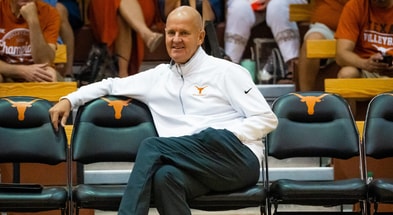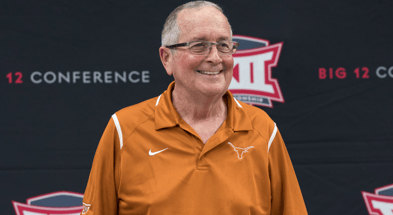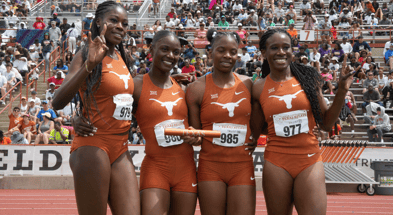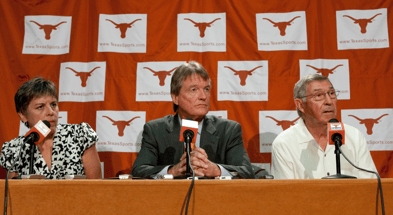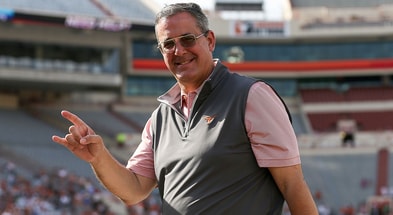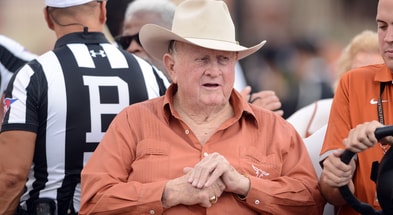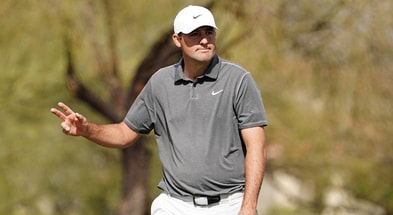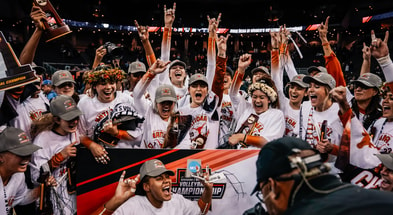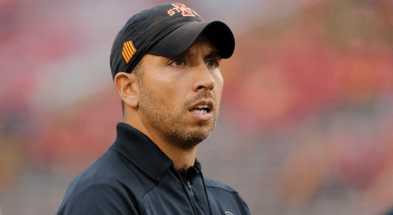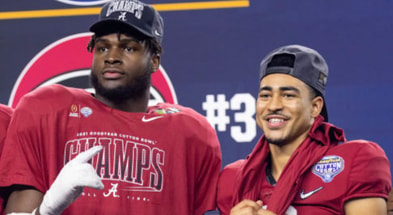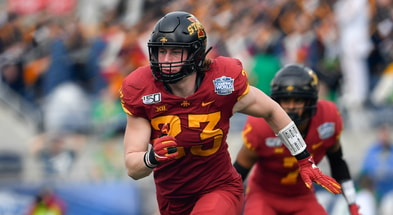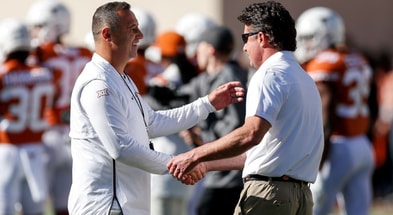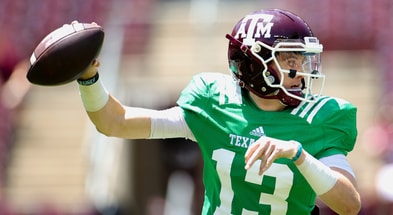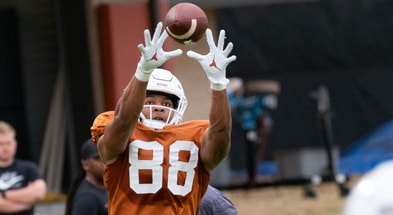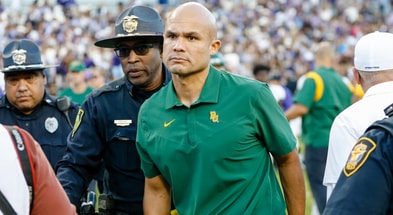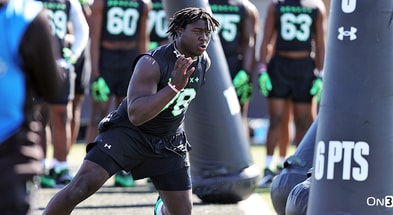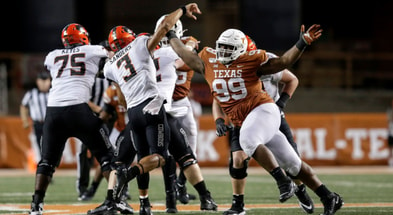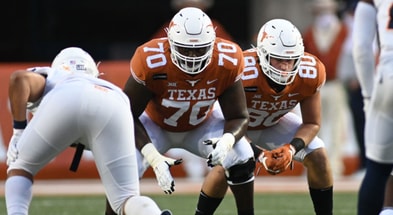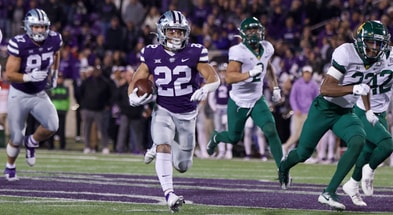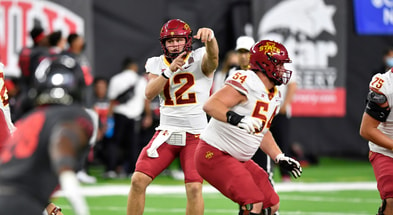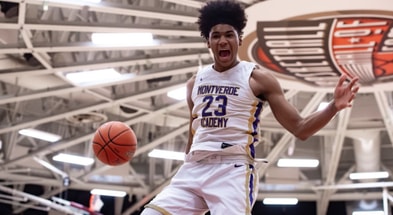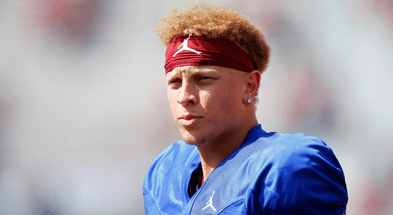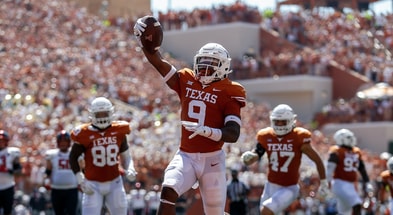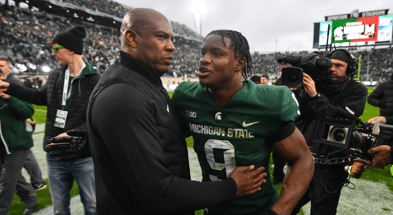Oklahoma Sooners spring game breakdown
The Oklahoma spring game was pretty interesting and possibly revelatory about their upcoming season.
All the normal spring game caveats apply and a few others do as well. It’s just a scrimmage, it’s pretty vanilla, and it’s also the first install of new systems in every phase for Oklahoma. What’s more, they held a draft of the teams so you didn’t get cohesive units working together. All of those factors are enough to force serious restraint in evaluating this squad.
However, there are always positives and negatives to be gleaned. In the instance of the 2022 Sooners, the negatives were pretty obvious.
Jeff Lebby’s challenge
The Sooners ran the basic building blocks of a Veer and Shoot offense in the spring game. What’s the Veer and Shoot? It’s my term for the Art Briles system, which is designed around maximizing three of the basic spread offensive forces:
- Spacing
- Run/pass conflicts
- Tempo
The run/pass conflicts and spacing in the Veer and Shoot are extreme, here’s how they line up on a typical snap:
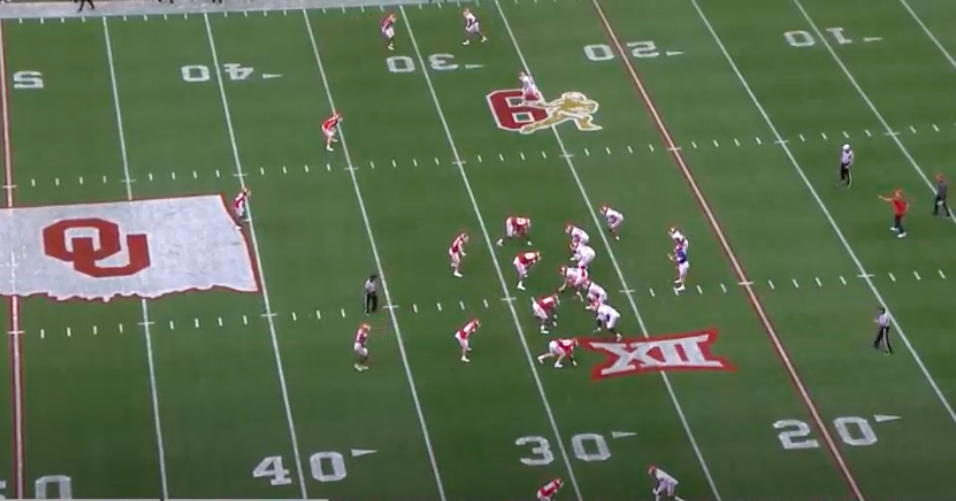
The slot receiver is lined up further out than many an outside receiver in a traditional offense. The outside receivers? Both outside the numbers.
You have to cover them, can’t just leave them wide open, so you end up with three defenders spaced WIDE away from the box. If you want a “+1” defender in coverage on either side then you’ve now got four defenders who are too far away from the box to stop the run.
That leaves fewer in the box to withstand the constant barrage of runs from an O-line and tight end typically chosen for size and their ability to bludgeon opponents with a power run game. Naturally it’s also very heavy on RPOs and play-action, so you can’t sneak defenders into the box without being obvious and yielding easy passing windows.
Those issues are all further exacerbated by the offense going as fast as they legally can to help wear down defenders who are split apart by the spacing and run/pass conflicts.
One of the issues for Oklahoma with this system is the fact that its novelty is completely gone. It’s now run at multiple SEC schools and has been seen in the Big 12 for over a decade now. Many a defensive coordinator has worked out blueprints for how to handle the extreme stress of the system, there’s no shortage of film. In my book I detailed how Oklahoma handled it during their big win over Baylor in 2015.
Additionally, there are important prerequisites for the system which Oklahoma may struggle to meet. If you’re going to spread a defense out and make them choose where they want to have help, you run the obvious risk of the defense choosing to make you beat them left-handed, so your left-hand better be pretty good.
What’s Oklahoma’s left hand in 2022? There are a couple of possibilities, which makes the situation even worse.
One is their passing game executed against good man coverage outside. Can Dillon Gabriel and these receivers beat man coverage and punish 1-on-1s?
That sounds like an easy yes and there will probably be a Sooner fan who reads this and thinks, “uh, yeah? Of course they can!”
Here’s the trick of it, those wide splits work against you at a certain point. The receivers have LESS space to run routes in because they’re so close to the sideline and they’re farther away from the quarterback, necessitating a harder throw that’s in the air longer. You could see the issue on a few of Gabriel’s tosses in the spring game which were picked off or broken up when he was trying to hit an outside receiver against tighter coverage.
The next issue is the run game, particularly at tight end. My readers may recall that I was detailing OU lacking good answers for blocking a nickel front during the 2021 season (until Caleb Williams took over and added a run threat). If the defense put six defenders in the box, OU could block five with their O-line but their tight ends and H-backs weren’t actually particularly good at blocking the sixth.
The same issue exists for this coming season, neither Brayden Willis nor Daniel Parker are big, physical blockers who offer the offense a lot of variety for the power run game. Freshman Jason Llewellyn is a better fit at 6-foot-5, 260 pounds but he’s exactly that, a freshman. Running Gabriel regularly is a bad idea for obvious reasons.
They’ll work out some solutions with RPOs to the tight ends, some of which will be really nasty and effective because Willis and Parker are solid athletes, and the tempo component will make it better still.
Yet, you need to be able to run the ball on a nickel front from time to time and if opponents dare them to do so and they cannot, it’ll be a big problem.
Overall I suspect they’ll have a decent floor so long as Gabriel is healthy because he knows the system and they’ll scheme open space for their run game, which combined with tempo will wear out some defensive fronts. My “what happens if Gabriel is hurt” question is probably starting to become more ominous in Norman now everyone has seen Nick Evers. I’ve seen OU fans suggest, “we’ll just hit the portal” but that’s a tough sell. Gabriel has two years of eligibility left and you’d better believe he’ll use them if he can. Then Jackson Arnold is committed. It’s not a great landing spot for top line passing talent.
The spring game also revealed some concerns about pass protection. Is there an All-Big 12 caliber tackle on this roster? Their two left tackles in this game were Anton Harrison, who has yet to become the NFL talent he showed glimpses of in the past, and then massive TCU transfer Tyler Guyton (6-foot-7, 325 pounds). Highly touted Wanya Morris and Savion Byrd traded off looking like non-left tackles over on the right side. It’s hard to see the sort of O-line advantage in Norman right now they had for the Lincoln Riley era.
Overall, here’s their big fears; a good flyover defense who knows how to confuse Gabriel and stop the run without overcommitting and giving away easy passes and/or a defense which can play man coverage on their outside receivers and load up the middle of the field. There may actually be a few of those in the Big 12.
Brent Venables’ defensive rebuild
Marcus Stripling has been given a big thumbs up for his progress in the defense this spring, which means a couple of things. First, he’ll probably have a big season because Venables definitely knows how to set up a good Edge in the pass-rush. Secondly, I doubt we get a flyover defense from Oklahoma this coming season.
They could, theoretically, build one which involves Stripling as an Edge among the 3-down linemen but he’s a bit small for it at 6-foot-3, 239 pounds. A better fit would be to play as a Jack, who stands up in the 3-down and is more of a true hybrid linebacker, which is how they used him in this spring game.
I was amused watching their spring game by the fact I was essentially observing Venables 2011 defense, particularly when it faced Art Briles’ Baylor.
They played a true 4-2-5 (with the flexibility to be a 3-3-5) and mixed mostly between bracket quarters and a single high coverage. Here were the designations and typical alignments they showed, particularly the base quarters defense.
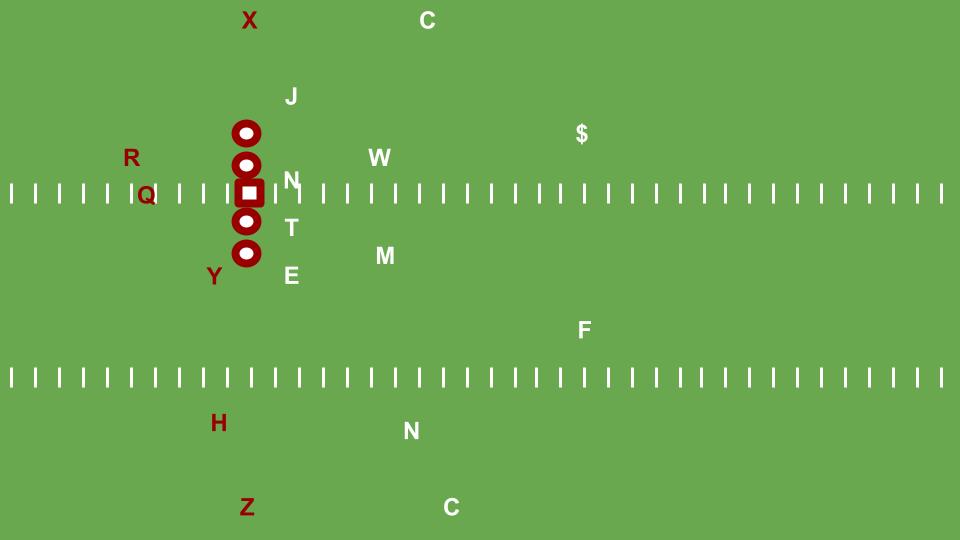
The cornerbacks are basically in man coverage. They may or may not get help inside from the safeties. It was like this under Alex Grinch as well and they’ll similarly mix press or off-man techniques based on the abilities of the players.
The nickel and free safety bracket the slot receiver if he’s aligned to the field. The nickel needs to be an active force out wide on the perimeter and the free safety needs to be able to flip his hips and run with a vertical. At nickel they had Justin Broiles, 6th-year senior, and true freshman Jaren Kanak. Free safety was Billy Bowman and sophomore cornerback convert Damond Harmon.
Strong safety is the interesting position. He’s reading the tight end for his assignment. If he sees pass blocking from the tight end, he’s bracketing the receiver to his side. If he sees run blocking from the tight end, he’s coming downhill to join the fit as their extra defender. If the tight end is running a route, he’s covering him on vertical routes but on underneath routes leaving him to a linebacker and helping bracket the receiver to his side.
It’s a job for a quick-thinking, physical veteran. They had redshirt sophomore Key Lawrence and freshman Robert Spears-Jennings playing this position in the spring, presumably UNC transfer Trey Morrison would fit here as well.
How well their secondary plays this season almost certainly comes down to whether they have a cornerback who can hold up without consistent help from the strong safety and then whether they can develop Lawrence to be where he’s needed as a strong safety and how much impact he has when he’s there. I think they’re a year away from being particularly good.
Back in the day, how well teams managed Venables’ defense often came down to whether you could pick up and block his pressure well enough to attack their secondary. I see no reason to think this will change in 2022, years later, as the secondary looks suspect but the front is filled with athletes who will be put to use in the blitz package.
Overall Oklahoma is going to look to overwhelm teams from out of the gate next season.
Can you handle our tempo? Can you handle our size up front in the run game? Our speed outside at receiver? Can you handle our pass-rush?
This doesn’t have the look of a team that can adjust easily or out-execute opponents from base offense or defense. It’s too early with a new culture, new systems, and a roster which wasn’t chosen and developed for Venables’ system. But they can come out throwing haymakers and perhaps more teams than not won’t be able to get back up when they land.
